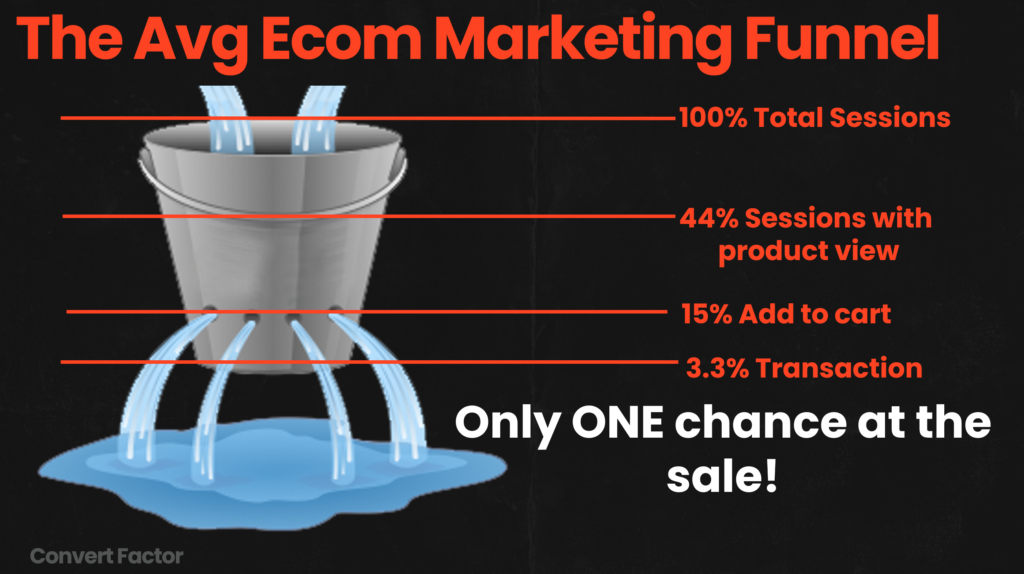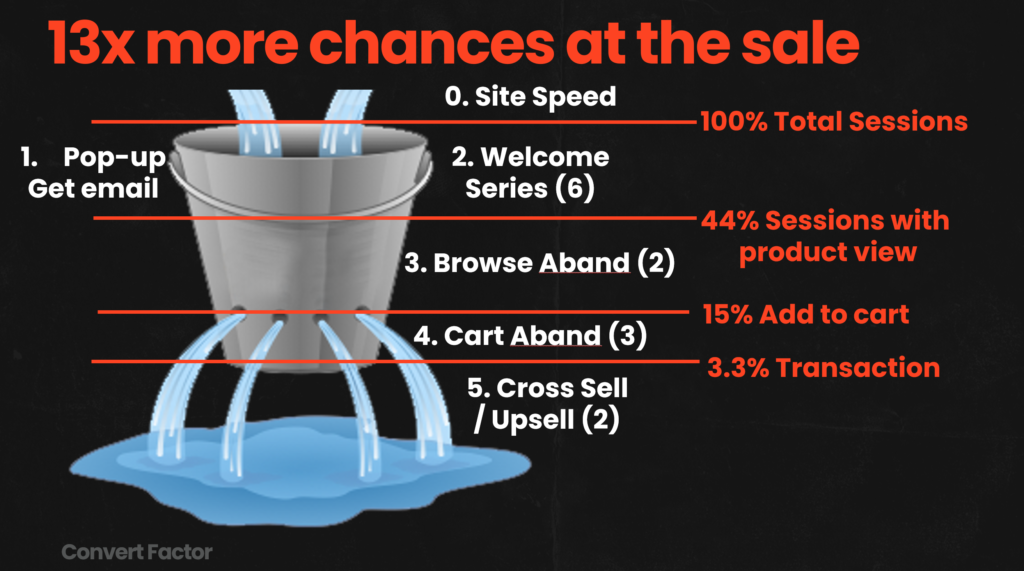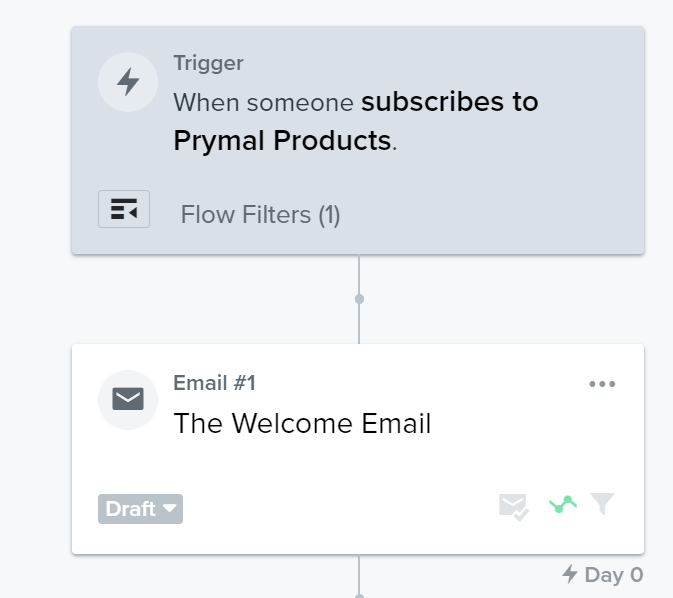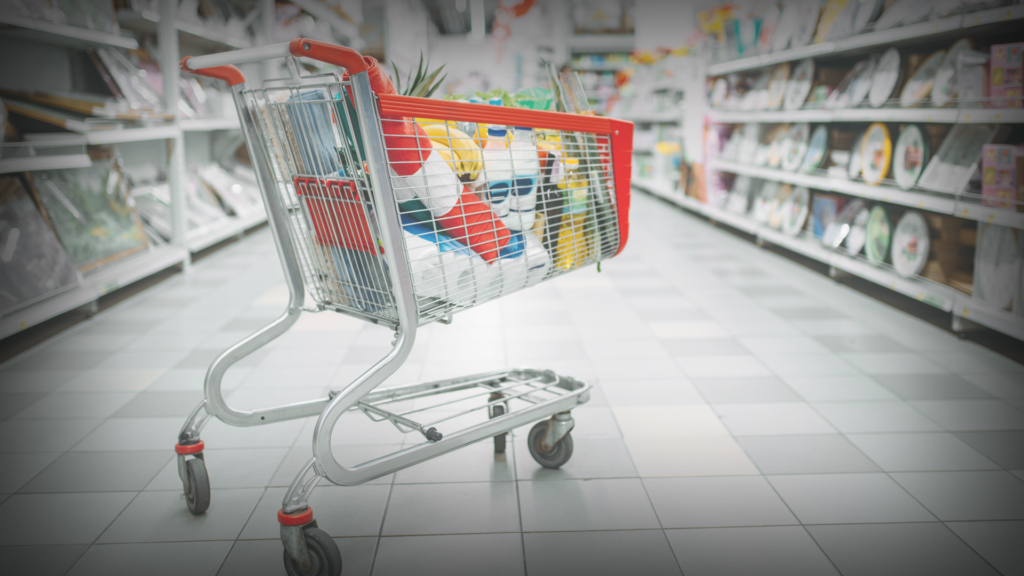Get a crash course on the top 6 money-making ecommerce marketing automations that all ecom brands should have. You’ll find out how each automation works and what each automation can bring to your brand’s or your client’s bottom line.
And maybe you’ve already heard of these automations before, but you don’t know exactly how they all work together and how they work with your email campaigns?
In this article, you can skip to: Email campaign vs Automation defined, How to fix your leaky bucket marketing funnel, Pop-up, Welcome Series, Browse Abandonment, Abandoned Cart, Cross Sell/Upsell, and the Customer Winback.
In the video, you can skip to: Email campaign vs Automation defined, Website Pop-up, Welcome Series, Browse Abandonment, Abandoned Cart, Cross Sell/Upsell, Customer Winback, and How they all work together with your campaigns.
What is an ecommerce email marketing automation? What isn’t it?
There’s a common misunderstanding between the two types of emails, campaigns and automations.
Campaigns are written once, sent once, to people subscribed to your email list when you schedule them. They require ongoing investment. Newsletters, promotions, sales and new product launches are examples of email campaigns. These scale with the size of your email list and make immediate sales.
Automations are written once, and sent based on the logic that you configure as often as they are triggered by subscribers taking some action. The are a one-time investment for an asset that continues to turn your product inventory into cash into your bank account. They work 24/7/365 for no ongoing cost and scales with your website traffic and email list size. Abandoned cart and welcome series are some examples. They are also known as flows, sequences, drips and customer journeys.
Both of these types of emails work together to help ecom brands achieve more sales, product reviews, repeat customers and more.
Now I’m about to let you in on a little secret. 90% of brands out there aren’t fully optimizing their email channel and it’s costing them HUGE amounts of sales. What if your brand could make 10% MORE revenue overall for a one-time investment?
Then read on and hear the horrifying tale of the leaky bucket funnel…
The leaky bucket effect and how to fix it

Would you rather just one chance at making a sale, or 10 or more chances?
Ecom brands have it tough. You’ve got to keep investing cash into marketing to drive traffic to your website.
Traffic = impressions of your products = sales. But with the cost of Google, FB and Insta ads on the rise, it’s hard to break even let alone make a profit.
Few brands reach the ecom holy land where they find an ad that works… meaning for each $1 they put in, they get more than $1 in sales enough to be profitable. All are in search of the fabled ‘money machine’.
Think about your ecom brand’s website as a bucket with holes in it. At the top, we spend money to drive traffic. We pour the water in.
At each step of the buying journey, water seeps out. Money wasted and left on the table.
Once you actually get traffic to your site, you next need your potential customer to actually look at some product pages…
and DRIP, DRIP, SLOSH! 56% of the water in your bucket leaks out onto the floor. 56% of your traffic is gone and hasn’t even made it to a product page.
They’ve clicked off and are now watching cat videos as we speak.
It’s a damned shame.
Then… for those still around that make it to a product page, boy you’ve got your work cut out for you.
Your prospective customers need to be so convinced by your site layout, product images, page copy and customer reviews that they are willing to give a strange company they never heard of before their credit card information.
A tall order indeed.
Only 15% of your traffic will ever add a product to cart. Then, if you are doing things right, 3.3% will actually pull the trigger and buy.
And get this – you only get ONE chance at the sale.
You just spent $2 on adds to get Jimmy to take a look at your store, get distracted and then he never returns. And you have no way of contacting him again.
That is, unless you implement these proven methods.
Let’s take a look at your bucket after we implement some baseline ecommerce marketing automations:

First, we’re going to make sure that the water you are pouring into the bucket actually lands there to begin with.
The easiest way to do this is to make sure your ecom site is lightning fast. Under two seconds is good, under 1 seconds is godly.
If your site load time is over 4 seconds, you will lose people. FAST. How long would you wait for a website to load before you give up?
Every second beyond 2 increases the number of people who bounce before your page even loads. Your site conversion drops drastically for each extra second of load time.
Paying for traffic with a site slow as molasses is like pouring water directly onto the floor.
How does your site speed measure up? You can find out for free on GTmetrix.
If you need help speeding up your website, click here and we can get it done for your in under 10 days.
After we address site speed, adding a pop-up will capture 3-8% of all of your new traffic as email subscribers, lining them up for the next ecommerce marketing automation to come.
For each person that volunteers their email address, they will receive your welcome series. That’s 1 email per day for 6 days or until they buy.
The series lays out your entire sales argument. That’s 6x more chances at that first sale.
Now let’s say that same person doesn’t buy after those 6 emails, but comes back to your site. They browse some products but don’t buy.
That’s going to trigger your browse abandonment automation.
They will get two more emails, 1 per day that are going to nudge them to come back and buy the product they were browsing.
That’s 2x more chances at the sale. Bringing us up to 8.
But what if they still don’t buy, but this time they’ve added something to their cart?
Well, that’s going to trigger 3 emails, 1 per day of your abandoned cart flow.
The third email will even sweeten the pot and offer a one-time discount for them to finish their shopping.
Now we are at 11 chances at the sale.
And low and behold, they make a purchase after that last email. They are pumped to receive your products that they’ve now heard so much about.
They are going to get queued up for your 2 post-purchase flow emails to entice them to buy more of the same products or buy a complimentary product. With a discount even if you are so kind.
So that’s how we go from one shot at the sale to a full shotgun 13 shot blast.
And the best part?
You can set this all up for a one-time investment. These aren’t campaigns that require continuous work to prepare and schedule.
and this is just scratching the surface. There are dozens of other automations that can be put in place in addition to these baseline ones. And as your list grows, you can make your flows more and more specific and relevant.
Here’s a small sample of other flows that can be added to not only seal up your bucket’s holes, but plate it in titantium:
-Review gathering with incentive
-VIP flow
-Rewards flow (you have X points to spend in our store!)
-Refer-a-friend flow
I’m going to cover each ecommerce marketing automation – the baseline automations that all brands need in more detail below.
You’ll get a strong grasp of how they work and how they can pull in more sales for your business.
1. Website pop-up
What it is and how it’s triggered:
Not an email, but it’s like it sounds. It’s a pop-up on your website that has a field to enter a name and email address. There are different varieties, like a spin-to-win, but most offer a discount or free gift as ‘bait’.
The goal here is to get people to voluntarily give you their email address so that you can market to them with email.
It’s triggered by website traffic set by your parameters. You can make it pop-up on page load, after x seconds, after x% page scrolled or on exit intent.
Exit intent tends to convert better because it doesn’t interrupt what the user is doing. If you see a pop-up before you can even see what the website looks like, why would you fill it out?
Plus, if people want to buy at ‘full price’ without needing the nudge of your one-time discount – let them do this.
Alternate names for the automation:
Lead capture, email capture, it’s not an embedded form.
Profit Potential and why it matters:
Pop-ups convert your hard earned traffic into email subscribers which fuels your welcome series. They also convert at 3% on average.
Let’s say that you have 2,000 visitors on your site each month. If your popup is converting at just 3%, that’s 60 new email subscribers each month. But top performing pop-ups convert at 8% or greater, which is equal to 160 new email subs!
Pop-ups also scale with your traffic and are a great ecommerce marketing automation to spend time improving and optimizing.
Compare this to embedded forms that have less than a 1% conversion rate, or just 20 subs/month. Pop-up forms are critical to driving your brand’s email list size and sales growth with email.
2. Welcome Series

The Big Kahuna. La crème de la crème…this is the lowest possible hanging fruit for ecom brands out there. It’s the one automation that you’ll want to optimize. If you want to learn how to build yours out using proven methods, see my guide here.
What it is and how it’s triggered:
It’s an automation that sends a sequential set of emails to your NEW email subscribers.
These are 1-6 emails, one per day with the goal of getting the subscriber to make their first purchase.
It’s triggered when someone subscribes to your newsletter via your website’s popup or embedded form.
These emails welcome your new subscriber to the brand and deliver the promise from your pop-up of a discount code, free shipping or some other freebie.

Alternate names for the automation:
Customer journey, nurture sequence.
Profit Potential and why it matters:
We want to strike when the iron is hot. A brand new subscribers is telling you that they WANT to hear more about your brand. So make a good impression.
When set up correctly, this sequence can lay out your entire sales argument for your brand.
It can tell your brand story, what you stand for and what sets you apart from the competition.
This leads to building strong bond and positive associations with your subscribers and not only make them buy, but make them EXCITED to buy. No other automation has this potential.
With open rates north of 45%, and sales 23x greater than regular emails, welcome sequence emails are the highest performing emails that brands will ever send.
This one sequence alone can be worth many thousands if not millions of dollars per month based on the size of your brand and site traffic.
If you’ve got limited time or budget, optimizing your site speed, welcome series and website pop-up will bring you the biggest ROI and quickest results.
3. Browse Abandonment

What it is and how it’s triggered:
This automation is 1-2 emails that are It’s triggered by a returning subscriber going to your website, browsing some products but not buying or making it to the cart page.
They were window shopping. They will get emails that ‘nudge’ them to come back to the store and take another look at the product with the goal of making the sale.
The key here is that we need the visitor’s email address first before this flow can fire off for them.
Alternate names for the automation:
Site abandonment. But this is not the same as abandoned cart.
Profit Potential and why it matters:
This flow can be worth thousands of dollars per month and this flow works hand-in-hand with your email campaigns.
Your campaigns will boost your site’s traffic from subscribers and those that don’t buy will get more nudges or impressions which means more chances at the sale.
Not all email marketing software has the capability to set up this automation.
So your brand could be leaving money on the table. Is leaving thousands on the table per month in order to save 50 bucks on email software a good deal?
4. Abandoned Cart

What it is and how it’s triggered:
This automation is 1-3 emails that are It’s triggered by a someone going to your website, putting a product into their cart and entering their email address but not completing the transaction.
They were JUST about to buy, but then something happened…
Imagine your customer is just about to buy and finish their cart… But then their cat throws up across the room so they jump out of their seat to clean up the mess and then go to bed.
The next day they go about their day totally forgetting that they never hit ‘complete order’.
There are tons of reasons why a customer abandons their cart. People are busy and distracted. Life happens.
It could also be that the discount code didn’t work. there’s an issue with their credit card, or they realized later in the cart that you don’t ship to where they live or shipping is expensive.. the list goes on.
The point is that we want them to finish what they started and come back to buy.
And that’s where the abandoned cart automation comes in to work its magic.
This automation is similar to browse abandonment where we will ‘nudge’ them to come back to the store and complete the purchase of their specific cart.
Profit Potential and why it matters:
70% of ecom carts are abandoned. It’s your job to recover them.
You did all your work correctly and they got 98% of the way there, but then something happened.
Sometimes adding a simple sentence like ‘if you had any issues with checkout, just reply to this email and we’ll get it fixed ASAP’ can do wonders to identify issues with your website or help customers that are having a problem. It can be as simple as a discount code not working.
This flow can be worth thousands of dollars per month and this flow works hand-in-hand with your email campaigns.
Your campaigns will boost your site’s traffic from subscribers and those that don’t buy will get more nudges and chances at the sale.
This is just like the browse abandonment flow. Ecommerce is a game of impressions. Sending more emails will generate more sales.
Now that we’ve covered the two abandonment defensive flows, it’s time to go on offense. We’re going to push our existing customers to buy even more in the next flow.
5. Post-Purchase Cross Sell/Upsell
What it is and how it’s triggered:
This automation is 1-2 emails that are triggered by a customer making a purchase and are sent either a few days after purchase or a few days after you customer has received their order.
The goal of the email is to get your customer to make another purchase.
You can upsell – which is getting them to buy more expensive, premium versions of what they bought or more of them.
Or you can Cross Sell – introduce and sell them on complimentary products. If you bought product A, then you’ll love product B.
Alternate names for the automation:
Post purchase, push to continuity, re-order reminder.
Profit Potential and why it matters:
More profit! These emails increase your average order value, Boost customer loyalty and get them aware of your other products. It’s a big money-making flow and conversion rates of 9% are not uncommon.
You pay a lot to acquire new customers so you want to get as much revenue as possible out of each.
You are 60% more likely to sell to an existing customer than to just a subscriber.
6. Customer Winback

What it is and how it’s triggered:
This automation is 1-3 emails that are triggered by a customer who’s made at least one purchase, but hasn’t made another purchase in 30+ days.
The goal of the email is to prevent your customer from churning and get your customer to come back and make ANOTHER purchase.
It you imagine that the upsell/cross sell flow is an offensive move, the winback is a defensive one.
It’s a last-ditch effort to prevent losing this customer forever. Sometimes all they need is a reminder and a little ‘come’on back’ discount.
Profit Potential and why it matters:
This flow will increase your customer lifetime value, or the total amount of revenue you get from each customer before they leave you. (SAD!)
But it also serves to identify who you should clean and remove from your email list.
Having lots of subscribers that don’t open emails or buy can cause your future email campaigns to land in SPAM.
Looking for help building these for your brand?
If your ecom brand isn’t making 10% or more of it’s total sales through automations, you are leaving money on the table.
I help ecommerce brands implement all of these automations to get them 10%+ sales from flows that scales with their business in a done-for-you package.
You get your own ‘titanium-plated bucket’ asset to keep, written in your brand voice that will bring you more sales 24/7/365 without ad spend. Plus, a lighting-fast website to boot.
If that sounds like something you are interested in, then click here to see if we’d be a good fit to work together.
